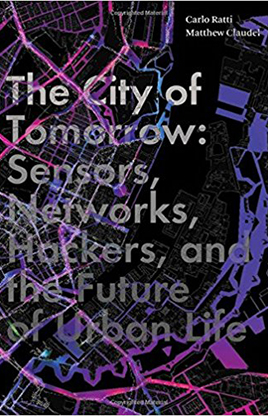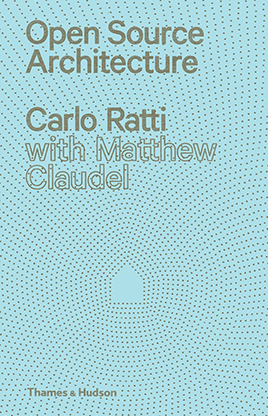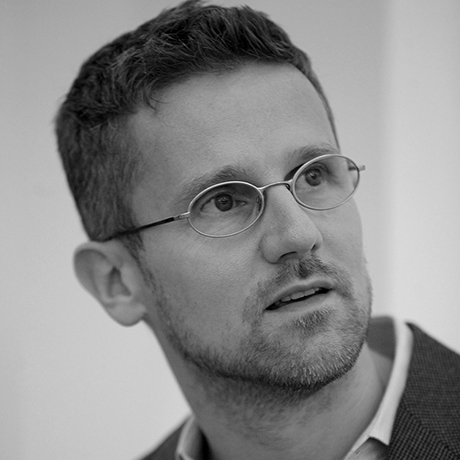Building Harmonies: Toward a Choral Architect

“In reality, architecture has become too important to be left to architects”. Giancarlo de Carlo
Although people know what they need and want, yet architecture spins into navel-gazing and drifts farther and farther from the possibility of substantive contribution to the communities it is meant to serve.
During the summer of 2006, Annie Choi -a recent graduate of Columbia's School of Arts writing program hunched- over her laptop, typing quickly despite the noise of the New York City streets outside and the heat trapped in her apartment. Perhaps because she was relegated to a cramped 187-square-foot studio without air conditioning” she harboured festering resentment. On her screen was an open letter to architects, its first words: “Dear Architects, I am sick of your shit.”
Choi had come to know the editors of Pidgin Magazine - a recently founded annual publication based at the Princeton School of Architecture. The first issue of the magazine had been quite rigorous: a self proclaimed “dispatch” from within the school to communicate architectural work and ideas to the outside world, taking shape as 256 very well-designed pages of theory, renderings and project descriptions. Very high-level, of course, so the editors reasoned that the second issue might need a breath of fresh air. It would be great to invite a non-architect to contribute.
Choi was about to publish her first book, Happ y Birthday or Whatever, finding her wry, irreverent voice. Whether or not the editors expected it, Choi delivered a scathing deadpan criticism.
After dense pages of Pidgin's cutting-edge academic discourse on architecture, the letter from Choi was a jab in the ribs. Choi was actually making an incisive criticism: architects look around you. Don't take yourselves so seriously, and spend a moment to think about the people you are designing for.
Responses to the letter were violent. Choi had hit a nerve. The letter put into words -in the frank, readable language that architects cannot seem to get onto a page - the extent to which architecture had spiralled into itself, exposing the tremendous effort of the Promethean architect as nothing but self-congratulatory irrelevance.
There is a sharp asymmetry at play: people know what they need and want, yet architecture spins into navel-gazing and drifts farther and farther from the possibility of substantive contribution to the communities it is meant to serve. In his l975 book Soft Architecture Machines, Nicholas Negroponte wrote that there is “a general feeling that architecture, particularly housing, has been inadequate and unresponsive to the needs and desires of its users... the design of housing is in the wrong hands, that is, in the hands of an outside 'professional' rather than that of the resident.” No one is more familiar with the user's needs than de users themselves, yet they are excluded from de process.
The objective of user-focused design has long motivated architects. The goal of modernism and the Gesamtkunstwerk approach was to resolve all of the deficiencies, inefficiencies, and inadequacies of architecture in one swift stroke. Considering the totality of human inhabitation as the object of design, the Promethean architect sought to reform modern man, from spoon to city, from city to society. That gleaming white purity of intention has, over the past century, been at best revealed as a chimera, and at worst forcefully shattered by the realities of habitation and society. Yet the profession clings to its scraps of messianic idealism, at once aloof and impotent.
The blame, however, is hard to place. In what amounts to a universal tangle of finger-pointing, specific issues are shunted between participants. Almost all governments, for example, promote the construction of more energy-efficient buildings, but effectively pass the baton to development organizations that (logically) see higher energy performance purely as a cost. 'The only person with a direct economic interest in designing for better energy performance is the person who will pay the energy bills” ...and the only way that person can exercise control is to shut off the heater and shiver through winter. The general principle applies to nearly every aspect of design.
With the lack of user participation echoing throughout the history of modern architecture -and as users drift ever farther from the design process today- new open-source models for a collaborative approach may have dramatic implications. From software to fab labs, open-sourcing has emerged as a powerful new mode for engagement. The pressing question is how to reorient architectural practice towards people, and the answer will be to put architecture into the hands of those people themselves. Has the moment for a new, relational and less hierarchical form of production finally arrived?
This amounts to a galvanic call for action. Ethel Baraona-Pohl maintains that “the time has como to transform dissatisfaction into serious proposals, to start taking back the city for the citizens, to remove the distinction between public and private in the urban environment, to go from DIY (do it yourself) to DIWO (do it with others).” No doubt an extreme position, but there may yet be a future for architecture designed by humanity, for humanity.
In the course of this revolution, as control returns to the crowd, must the architect be guillotined? Does this toll the death of his Promethean figure? He can only survive through adaptation - and if he is successful, what will be his role?
Redefinition of the architect
This central question -a redefinition of the architect- has been explored from many angles by architects and thinkers since the 1960s. In a prescient answer, Nicholas Negroponte predicted the evolution of the designer into a “middle man”: a creator of open frameworks rather than deterministic forms. The process of architecture “would not be a case of reckless autocracy; rather, it would be a pervasive and evasive set of restrictions,” suggesting a fundamental transformation of architectural deliverables. Rather than providing a finite and buildable design, the architect would determine a set of parameters that direct a flourishing body of ideas, a nearly infinite spectrum of potential architecture. Architects would design the question, not the response.
Concerned with - in the words of Hans Ulrich Obrist –“flexibility, responsiveness, transience, relativity, joy,” Cedric Price worked toward a similar reconfiguration of the architect’s role, forging an idea of the architect as programmer. In projects such as Potteries Thinkbelt (1965), The Generator (1976), and the Magnet Project (1997), the architect provided a set of algorithms, provocations and interactions. “In Price’s view, the architect should not be content with being a mere designer of hardware, but should demand an even broader responsibility for creating activity programs and determine how they could be integrated.” “'The idea is not to occupy space, but to trigger relations and social spaces, stimulate new patterns and situations of urban movement in the city.” The architect offered event rather than form.
The role of the architect, in “Habraken's estimation, is closer to that of a gardener. He learns horticulture, surveys the land, creates planter beds, and nurtures the pl nts that inhabit them. He is in partnership with inhabitants, rather than sitnply delivering a product and has an opportunity to participate in the evolution of the autonomous built environment through creating frameworks within which users design.
Beginning in the early 20th century, the emergent discipline of cybernetics sought to explore network systems, focusing on the communication and connections between interdependent nodes - and it offered the language in which Price would define the architect-as-programmer, in a fertile collaboration with pioneering cybernetician Gordon Pask. In The Architectural Relevance of Cybernetics (1969), Pask was one of the first to apply the conceptual framework of cybernetics to architecture. “We are concerned with brain-like artifacts,” wrote Pask, “with evolution, growth and development; with the process of thin king and getting to know about the world. Wearing the hat of applied science, we aim to create...the instruments of a new industrial revolution - control mechanisms that lay their own plans”. When exercised in architecture, cybernetics was less about designed, artistic, object-buildings than architectural scripts for adaptive ecologies that evolve through a form of dialogue with inhabitants.
Price was discarding architectural precedent, in favor of architecture as event. Conversely, N. Joh n Habraken suggested that the redesigned design process would be discovered by the architect only through close scrutiny of the characteristics and tendencies embedded in the existing fabric of architecture – that is, considering the built environment as an autonomous entity. Throughout the history of architecture, as Habraken points out, building design has evolved on the timescale of generations. In the traditional evolution of vernacular architecture, a person may design her house to be similar to the neighbors', but with slight modifications and improvements. After a project is built, it is evaluated by the community, even unconsciously, and subsequent projects will modify and innovate. So architecture propagates and evolves, based on typologies, shared information and subtle experimentation –from Native American dwellings to Gothic cathedrals.
As Habraken articulated in The Structure of the Ordinary (1998), willful architectural intervention should be starting from a diagnosis. Based on a process of examining and analyzing the existing built environment, an architect can ultimately create frameworks that cultivate user-generated design, leading to “three-dimensional urban design.” A project is not a grand act of creation in and of itself, but a single link in a much longer evolutionary chain. The role of the architect, in “Habraken's estimation, is closer to that of a gardener. He learns horticulture, surveys the land, creates planter beds, and nurtures the pl nts that inhabit them. He is in partnership with inhabitants, rather than sitnply delivering a product and has an opportunity to participate in the evolution of the autonomous built environment through creating frameworks within which users design.
Power over one's environment
This is not traditional on paper participation. The key point, as Alastair Parvin notes, is to make a “distinction between group, consensus based collaboration (which is almost impossible) versus a more plural, pennissive, shared-protocol-based approach, in which individuals are more or less autonomous, but operate within basic common rules, and copy from each other (which is a linost inevitable).” It is a delicate process of independent but interconnected production, with the architect serving as gardener, catalyzing the collective-individual scale. People have agency in their own environment, which, collectively, constitutes the driver of the evolutionary process: “Ultimately, once the living cell is capable of individual action to adapt or reno vate, both invention and sustainability can penetrate rapidly in the entire body of an environmental fabric. At that point the network among inventors and designers - including lay people -can fully develop its true potential.”
Habraken's model, first posited in the 1970s, was prescient of production models that are only just coming into their own. Many of the collaborative experiments that have emerged on the Internet, such as Linux or Wikipedia, utilize a very similar distributed generative mechanism, but with a key difference: the autonomy of the individual contributors is guided, moderated and nurtured by editors who can make decisions from the top down. This editorial role, more than that of a gardener, a rniddle-man or a progran1mer, has a broader orchestrating function. He will have qualities of each, but simultaneously take on an entirely new character, in the context of a digital and networked world. It is a plural figure that could be called “the Choral Architect.”
The first and most fundamental responsibility of the Choral Architect is to frame the process, for steering the project by making often-difficult decisions and defining the rhythm of its development. He has a role as arbiter in the situations when consensus cannot bereached.
As it outlines a new kind of designer, the idea of a Choral Architect brings with it a host of related questions. What tools and methods can direct dispersed energy in a way that transforms a crowd into a cohesive, motivated, and productive entity? How can a broad network of people, working together, arrive at a buildable and relevant architectural design? And if that is the goal, how is the Choral Architect different from the principal of a corporate architecture firm? In light of this plural creative model, what is the specific role of the Choral Architect?
The first and most fundamental responsibility of the Choral Architect is to frame the process. Just as Torvalds did with Linux, the Choral Architect must begin by generating a “kernel” that is subsequently distributed, iterated and added to. Without an impetus, the crowd will default to Brownian motion. By the same token, Giuliano da Empoli suggests that one of the most important tasks is actually to end the collaborative production. Da Empoli implies that the Choral Architect is also responsible for steering the project by making often-difficult decisions and defining the rhythm of its development. He has a role as arbiter in the situations when consensus cannot bereached. He is also responsible for setting the pace of the entire process, deliberately orchestrating the moments of openness and collaboration versus closed honing and decisio-making. Within these capacities, the Choral Architect might also integrate his own esthetic or functional ideas, contributing expertise and personality to the specific project.
The output of an architect, then, would not necessarily be buildings or construction documents, but initiating, coordinating, and closing the process whereby architectural source code is shared, adapted and executed. The Choral Architect will orchestrate actions and interactions naturally emerging from a group of peers - and therein is the difference with the principal of a corporate architecture firm - rather than creating objects. In framing the work of a co-design lab at Sitra, Alejandro Aravena wrote, “A good strategic fra1nework will not precisely predict a single solution, but will help the best solution seem self-evident when identified.” Yet this does not at all mean an abdication of responsibility or even “signature” from a given project, any more than it does for an art curator.
If architecture can operationalize a similar design-curation ecosystem, each instance of this networked editorial creative process would be unique. A project would derive from the peculiarities of the particular group and the context it is working in, draw on the tremendous power of the network, and be moderated by the Choral Architect. Because the content of a project is not singularly generated (as in the author model), and because evolution happens within its lifetime, the choral approach yields surprising results. Valuable - and previously voiceless - insights will be aggregated and instrumentalized in the process of design. As the power of the crowd comes to bear on specific problems, the global could in effect mediate with the local, addressing some of the problems inherent in so-called “Critical Regionalism” -specifically, the irrelevance of a starchitect copying and pasting his characteristic style indiscriminately across regions or the blandness of standardized, anesthetized architectural products. The collaborative online design process brings together voices to create a kind of “Network Specifism.”
Contemporary network technologies give rise to robust and productive curation ecologies, just as in open-source software. But ultimately that global collaborative energy must be funneled into bricks-and-mortar architecture. The role of the Choral Architect is also to maintain and orchestrate that materialization process.
We can assert that design becomes plural -yet Habraken's most incisive question, posed in respons to the initial manuscript of Open Source Architecture, has still not been answered . What is different now than at any time in the past? After all of the frustrated efforts of involving users in the design process throughout the 20th century, what will make this substantively different? “That the digital revolution can and will play a role I do not doubt, but. ..how can a creative network of design and production driven by the digital revolution connect to the reality of built environment's life and development?”
Generating new possibilities
There are several factors that are poised to ignite new possibilities in architecture. First, information - the “code” or DNA of a build ing - can be shared instantaneously and a-spatially. The intellectual project of such groups as CIAM (Congrès internationale d'architecture moderne, founded by Le Corbusier in 1928) was to share thoughts, ideas, theory (or code) and collaboratively to write a cha rter - but in order to do so they had to rent a ship and sail across the Med iterra nean, to meet face-to-face. Today, collaborative writing happens effortlessly, implicating millions of people every second, around the world, through platforms like Wikipedia. Recipes or formulas for spatial phenomena can be considered as the software of architecture, notes Keller Easterling. Just as in Wikipedia, Linux, and open-source software, code can be shared, augmented and refined before it is compiled and executed. Choral design ignites the autonomy of the building process within a single project. The kernel of architecture exists as data, is honed by a distributed sequence of adding and editing, and finally culminates in aphysical structure - the execution of code in space.
In architecture, the ability to assess a building before it is built allows collaboration at every stage. To continue with the cooking metaphor, it is as if an individual soup itself were created collaboratively, that is, by many cooks experimenting together in the kitchen, constantly tasting their work. This is the mandate of the Choral Architect. To contradict the standard adage - architectural cuisine will benefit from many cooks in the kitchen, integrated by a talented chef.
This kind of sharing can happen effectively now that a building “exists'' digitally before it is constructed, promoting a radical change toward openness and distribution in the design process. In the case of cuisine, for example, there exist basic structures. For example, take bouillon - each time a specific soup is cooked, the structure is expanded and made unique, it is shared a nd eaten; and subsequently modified for the next dinner. The result of each experiment is evaluated, and information about the most successful developments is encoded in recipes to be distributed and replicated. Mutation only happens from one dish to the next. In architecture, the ability to assess a building before it is built allows collaboration at every stage. To continue with the cooking metaphor, it is as if an individual soup itself were created collaboratively, that is, by many cooks experimenting together in the kitchen, constantly tasting their work.
In this case, the design process would edge closer to the model of science writing, wherein a piece is created by a team of contributors, legitimized through peer review, and distributed for wider application within the field. Work is developed collaboratively, while the scrutiny of peer review ensures quality and provides a stamp of credibility. It is a self-regulating, participatory and incentivized system.
This is the mandate of the Choral Architect. To contradict the standard adage - architectural cuisine will benefit from many cooks in the kitchen, integrated by a talented chef. Situated between Le Corbusier's authoritative, era-defining voice and the Internet's dispersed collective banter, a designer enmeshed in networked communities will make harmonies. The architect will not be anonymous, but plural and cornpositional. Authorship will not be erased, but contextualized as it is woven into a relational fabric. The new architect is situated between top-down and bottom-up, channeling the raw energy of the latter through the targeted framework of the former. The responsibility of the Choral Architect is less oriented toward object-building than orchestrating process. She is not a soloist, not a conductor, not an anonymous voice among many. I'he Choral Architect weaves together he creative and harmonic ensemble.
Recommended
 The City of Tomorrow: Sensors, Networks, Hackers and the Future of Urban Life. Yale University Press, 2016
The City of Tomorrow: Sensors, Networks, Hackers and the Future of Urban Life. Yale University Press, 2016 Open Source Architecture. Thames & Hudson, 2015
Open Source Architecture. Thames & Hudson, 2015
The newsletter
Subscribe to our newsletter to keep up to date with Barcelona Metròpolis' new developments





